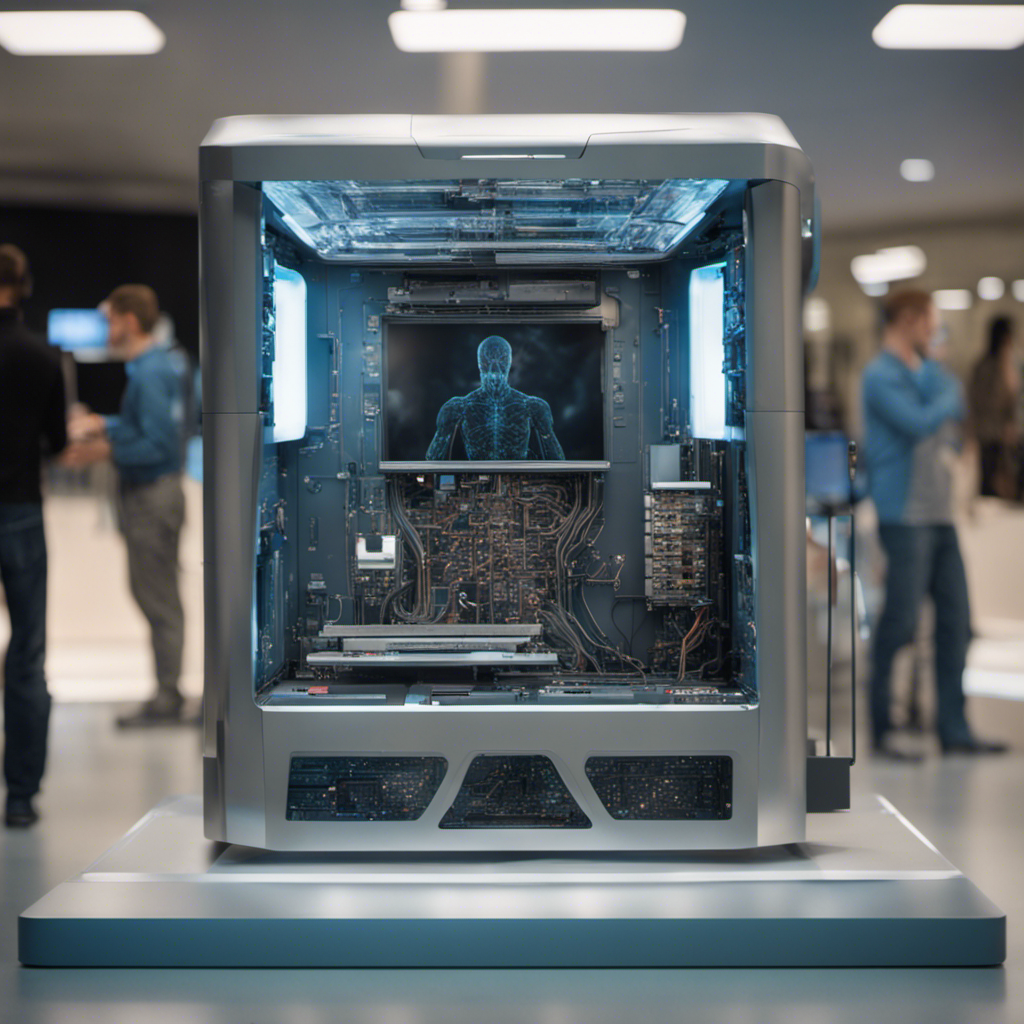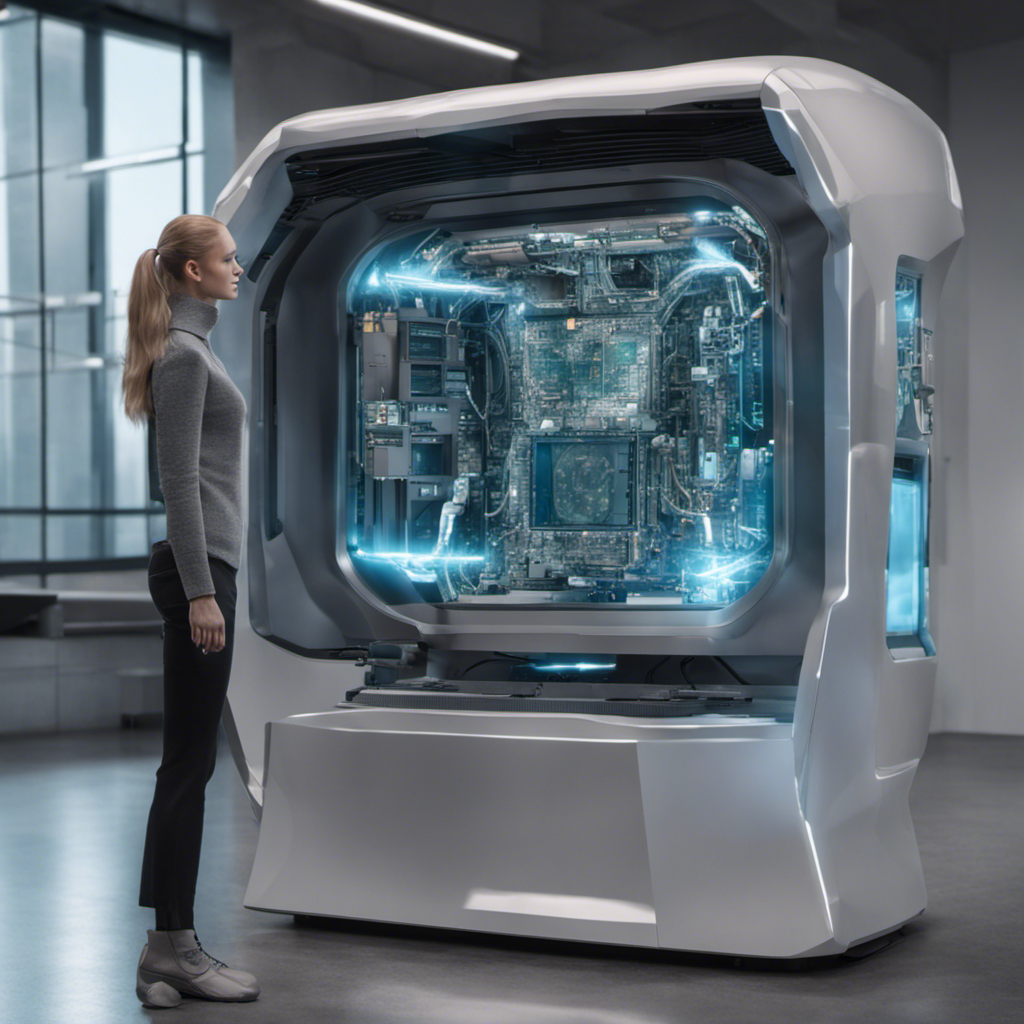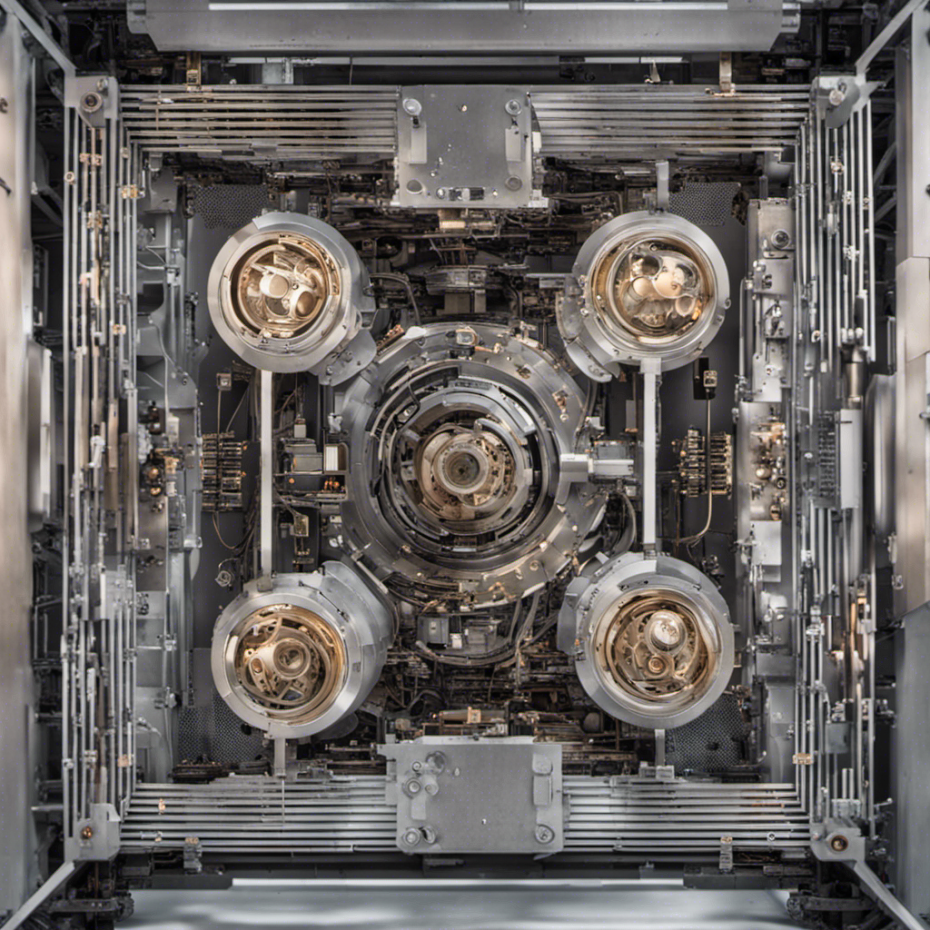
Understanding Artificial Neural Networks
What are Artificial Neural Networks?
Artificial Neural Networks (ANNs) are computational models inspired by the human brain’s interconnected neuron structure. They are a fundamental building block in machine learning and deep learning, designed to recognize patterns and make predictions or decisions.
An ANN is composed of nodes called neurons, organized into layers: an input layer, hidden layers, and an output layer. Neurons are connected by weights, and each neuron has an associated bias and activation function. The network learns by adjusting the weights and biases during training.
Mathematical Representation
A single neuron’s output can be computed with the formula:
Where:
- : Output
- : Activation function (e.g., ReLU, sigmoid)
- : Weights
- : Input
- : Bias
How Are ANNs Created?
- Software: Frameworks like TensorFlow, PyTorch, Keras facilitate the creation of ANNs. You define the architecture by specifying the number of layers, neurons, activation functions, etc.
- Hardware: ANNs can be trained on CPUs, but GPUs and TPUs are commonly used for their parallel processing capabilities, significantly speeding up training.
How Are They Trained?
- Forward Pass: Input is fed through the network. At each neuron, the weighted sum of the inputs is calculated, and an activation function is applied.
- Calculate Loss: A loss function measures how far off the predictions are from the actual targets.
- Backpropagation: The gradients of the loss function with respect to the weights and biases are computed, typically using the chain rule of calculus.
- Update Weights: Using an optimization algorithm like Gradient Descent, the weights and biases are updated to minimize the loss.
How and Where Are They Used?
ANNs are used in various domains:
- Image Recognition: Convolutional Neural Networks (CNNs) are used for tasks like facial recognition.
- Natural Language Processing: Recurrent Neural Networks (RNNs) are applied to sequential data like text for translation, summarization, etc.
- Healthcare: ANNs can predict disease outcomes based on patient data.
- Finance: For stock price prediction or fraud detection.
- Autonomous Vehicles: Used in perception and decision-making algorithms.
Examples
- LeNet: An early CNN used for handwritten digit recognition.
- LSTM: A type of RNN effective in sequence-to-sequence tasks, like speech recognition.
Conclusion
Artificial Neural Networks are versatile and powerful tools in modern AI. By mimicking the structure of the human brain, they can learn from data and make complex predictions and decisions. The rapid evolution of both software tools and hardware accelerators has made ANNs accessible and essential in many fields. From simple feedforward networks to more complex architectures like CNNs and RNNs, ANNs continue to shape technological advancements.
ReLU & Sigmoid functions. Vanishing & exploding gradient problems. Dimensionality Reduction & Collaborative Filtering
The ReLU (Rectified Linear Activation) and sigmoid functions are commonly used activation functions in the neurons of artificial neural networks (ANNs). Activation functions introduce non-linearity into the network, enabling it to learn and model complex patterns.
ReLU (Rectified Linear Activation) Function
The ReLU function is defined as:
Here’s a breakdown of how it works:
- If the input is positive, it returns .
- If the input is zero or negative, it returns 0.
ReLU is popular due to its simplicity and efficiency. It helps mitigate the vanishing gradient problem, where gradients become too small for the network to learn effectively.
Sigmoid Function
The sigmoid function is defined as:
![]()
It takes any real-valued input and transforms it into a value between 0 and 1. This makes it useful for binary classification tasks, where the output can be interpreted as the probability of belonging to one of two classes.
The sigmoid function has an S-shaped curve, and its derivative is relatively simple:
σ′(x)=σ(x)(1−σ(x))
Comparison
- ReLU: Simple, computationally efficient, and often helps in training deeper networks. However, it can suffer from “dying ReLU” problem, where neurons can sometimes get stuck during training and always output 0.
- Sigmoid: Smooth gradient, outputs values between 0 and 1, but can suffer from vanishing and exploding gradient problems, especially in deep networks.
These activation functions introduce non-linear properties to ANNs, allowing them to learn complex mappings from inputs to outputs. Different activation functions can be used in different contexts, depending on the specific requirements of the model and the data.
Vanishing and Exploding Gradient Problem
The vanishing and exploding gradient problems are challenges that occur during the training of deep neural networks, particularly when using gradient-based optimization algorithms like gradient descent. These problems are related to the gradients of the loss function with respect to the model’s parameters (weights and biases), and they can significantly hinder the model’s ability to learn.
Vanishing Gradient Problem
The vanishing gradient problem occurs when the gradients become very small, approaching zero. As the gradient descent algorithm uses these gradients to update the model’s parameters, small gradients result in very small updates. In deep networks, especially those using activation functions like the sigmoid, these small values can multiply through the layers, becoming smaller and smaller.
Why It’s a Problem:
- The weights and biases in the early layers of the network are barely updated during training.
- The network effectively stops learning, or learning becomes very slow, particularly in the lower layers.
- It becomes challenging to train deep architectures, limiting the complexity of the models that can be trained.
Exploding Gradient Problem
Conversely, the exploding gradient problem occurs when the gradients become very large. This can happen in deep networks if the weights are initialized with large values or if the learning rate is too high.
Why It’s a Problem:
- The large gradients result in large updates to the weights and biases, causing them to oscillate or diverge wildly.
- The model’s performance can become unstable, and it may fail to converge to a good solution.
- In extreme cases, numerical overflow can occur, leading to NaN (Not a Number) values in the computation.
Solutions
Several techniques have been developed to mitigate these problems:
- Proper Weight Initialization: Using specific initialization strategies, such as Xavier/Glorot or He initialization, can help prevent these problems from occurring.
- Using Different Activation Functions: ReLU and its variants (like Leaky ReLU) are less prone to the vanishing gradient problem compared to sigmoid or tanh.
- Batch Normalization: Normalizing the inputs to each layer can help control the scale of the gradients.
- Gradient Clipping: This technique limits the size of the gradients during training, preventing them from becoming too large.
- Using Shorter Networks or Skip Connections: Architectures like Residual Networks (ResNets) include skip connections that can mitigate the vanishing gradient problem.
Conclusion
The vanishing and exploding gradient problems are fundamental challenges in training deep neural networks. They stem from the multiplicative effects of gradients through layers, which can cause them to become either too small (vanishing) or too large (exploding). Various techniques have been developed to mitigate these issues, allowing the successful training of increasingly deep and complex models.
Dimensionality Reduction
Dimensionality reduction refers to the process of reducing the number of random variables under consideration by obtaining a set of principal variables. In other words, it involves transforming high-dimensional data into a lower-dimensional form, preserving as much of the relevant information as possible.
Why is it Useful?
- Reduces Overfitting: By removing irrelevant or redundant features, it can help prevent overfitting in a machine learning model.
- Improves Efficiency: Reducing the dimensionality speeds up the training and prediction processes.
- Enhances Visualization: Lower-dimensional data (2D or 3D) can be easily visualized, aiding in understanding and interpretation.
- Noise Reduction: It can help remove noise by retaining only the most important features in the data.
Techniques:
- Principal Component Analysis (PCA): Transforms the data into a new coordinate system where the data’s variance is maximized along the new axes.
- Autoencoders: Neural networks that can be used to compress the data into a lower-dimensional form and then reconstruct it.
- t-Distributed Stochastic Neighbor Embedding (t-SNE): A technique for visualizing high-dimensional data by mapping it into a 2D or 3D space.
Collaborative Filtering
Collaborative filtering is a method used to make automatic predictions (filtering) about a user’s interests by collecting preferences from many users (collaborating). It’s commonly used in recommendation systems, such as recommending movies, books, or products.
Types:
- User-Based Collaborative Filtering: Recommends items based on the preferences of similar users. If user A likes the same things as user B, then the items that B likes but A hasn’t yet seen can be recommended to A.
- Item-Based Collaborative Filtering: Focuses on finding items similar to those a user has liked. If a user likes item X, other items similar to X are recommended.
Challenges:
- Cold Start Problem: When there’s little to no information about a user or item, making reliable recommendations can be challenging.
- Scalability: Computing similarities between all pairs of users or items can be computationally expensive, especially for large datasets.
- Sparsity: Many recommendation systems deal with sparse matrices, where the majority of the entries are unknown, leading to challenges in finding similar users or items.
Matrix Factorization Techniques:
- Techniques like Singular Value Decomposition (SVD) can be used to factorize the user-item interaction matrix, allowing for predictions of unseen interactions. This can be seen as a form of dimensionality reduction.
Conclusion
- Dimensionality Reduction: It’s about reducing the number of features or dimensions in the data, preserving essential information. It has applications in visualization, noise reduction, and improving model efficiency.
- Collaborative Filtering: It’s a method to build recommendation systems based on the behaviors and preferences of users. It can leverage both user-based and item-based similarities and often utilizes matrix factorization techniques.
Both concepts have wide applications in data science and machine learning, enabling more effective analysis, prediction, and personalization.
Backpropagation. Unsupervised Neural Networks
Backpropagation, short for “backward propagation of errors,” is a widely used algorithm in the training of artificial neural networks. It’s a supervised learning technique that iteratively adjusts the weights and biases of the network to minimize the error between the predicted outputs and the actual target values. Backpropagation is used in conjunction with gradient descent or other optimization algorithms.
Here’s a general overview of the backpropagation algorithm:
1. Forward Pass
- Input: Start with an input vector and pass it through the network.
- Compute: Calculate the weighted sum and apply the activation function at each neuron in the hidden layers.
- Output: Obtain the final predicted output.
2. Compute Loss
- Calculate: Determine the loss (or error) using a loss function that measures the difference between the predicted output and the actual target values.
3. Backward Pass
- Calculate Gradients: Compute the gradient of the loss function with respect to each weight and bias in the network. This is done by applying the chain rule of calculus to work backward from the output layer to the input layer.
- Update Parameters: Update the weights and biases in the direction that reduces the loss, typically using a method like gradient descent.
Mathematical Details
The key mathematical insight of backpropagation involves the application of the chain rule to compute the gradients. Here’s a breakdown for a single weight:
- Output Error Gradient: Compute how the error changes as the output from a neuron changes: ∂E/∂y.
- Activation Function Gradient: Compute how the output of a neuron changes as the total weighted input changes: ∂y/∂z.
- Weight Gradient: Compute how the total weighted input to a neuron changes as the weight changes: ∂z/∂w.
- Total Gradient: Combine the above components to calculate the gradient of the error with respect to the weight: ∂E/∂w=∂E/∂y⋅∂y/∂z⋅∂z/∂w.
- Update Weight: Adjust the weight in the opposite direction of the gradient by a factor of the learning rate: w=w−α⋅∂E/∂w.
Challenges and Considerations
- Vanishing/Exploding Gradients: As previously mentioned, the gradients can become very small (vanish) or very large (explode), causing training difficulties.
- Computational Complexity: Backpropagation requires the computation of many derivatives, which can be computationally intensive for large networks.
- Local Minima: The optimization might get stuck in local minima, although this is less common in high-dimensional spaces.
Conclusion
Backpropagation is the cornerstone algorithm for training most supervised neural networks. By iteratively adjusting the parameters in the direction that reduces the error, backpropagation allows the network to “learn” from the training data. Its efficiency and effectiveness have made it a standard method in deep learning.
Unsupervised Neural Networks (UNNs)
Unlike supervised networks, UNNs operate without using labeled target outputs during training. Unlike supervised learning, where the network learns from a set of input-output pairs, unsupervised learning aims to discover hidden structures or patterns in the data. Below is an overview of some common types of unsupervised neural networks and the key differences from supervised learning:
1. Autoencoders
An autoencoder is a neural network used to learn efficient codings or representations of input data. It consists of two main parts:
- Encoder: Compresses the input into a latent-space representation.
- Decoder: Reconstructs the input data from the internal representation.
The network is trained to minimize the difference between the input and the reconstructed output. Autoencoders are often used for dimensionality reduction, noise reduction, or learning data representations.
2. Generative Adversarial Networks (GANs)
GANs consist of two networks, a generator, and a discriminator, trained simultaneously through a competitive process:
- Generator: Creates data instances that resemble a real data distribution.
- Discriminator: Tries to distinguish between real data and fake data generated by the generator.
The training process is unsupervised, and the networks learn to generate new data that is similar to the real data.
3. Self-Organizing Maps (SOMs)
SOMs are a type of artificial neural network used for clustering and visualization. They learn to map input vectors into a lower-dimensional space, preserving the topological properties of the input space. They’re used to discover patterns and correlations in data without using explicit labels.
4. Restricted Boltzmann Machines (RBMs)
RBMs are stochastic neural networks that can learn a probability distribution over their set of inputs. They have found applications in dimensionality reduction, classification, regression, collaborative filtering, and more.
Differences from Supervised Learning
- Objective: Unsupervised learning seeks to model the underlying structure or distribution of the data, while supervised learning aims to predict output labels from input features.
- Training Data: Unsupervised learning doesn’t require labeled output data, making it suitable for scenarios where obtaining labels is difficult or expensive.
- Tasks: Unsupervised methods are often used for clustering, dimensionality reduction, data generation, and feature learning, while supervised methods are used for tasks like classification and regression.
- Complexity: Unsupervised learning can sometimes be more complex to tune and interpret, as the lack of explicit guidance (labels) can lead to more nuanced or abstract representations.
Conclusion
Unsupervised neural networks provide a means to explore data without relying on predefined labels. They enable various tasks like clustering, data generation, and feature learning and can be powerful tools for understanding complex data distributions. The key difference from supervised learning is the absence of target labels guiding the training process, which leads to different objectives and methodologies.
About The Author

Bogdan Iancu
Bogdan Iancu is a seasoned entrepreneur and strategic leader with over 25 years of experience in diverse industrial and commercial fields. His passion for AI, Machine Learning, and Generative AI is underpinned by a deep understanding of advanced calculus, enabling him to leverage these technologies to drive innovation and growth. As a Non-Executive Director, Bogdan brings a wealth of experience and a unique perspective to the boardroom, contributing to robust strategic decisions. With a proven track record of assisting clients worldwide, Bogdan is committed to harnessing the power of AI to transform businesses and create sustainable growth in the digital age.








Leave A Comment